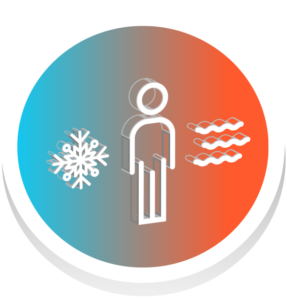Application Guidance: Personal Comfort Systems
Personal Comfort Systems (PCS) can be used in almost any context, including large open plan workspaces, private offices, or at home. They can be deployed to address specific thermal comfort issues in a particular area of a building or for specific individuals, or they can be deployed more generally across all work areas.
Perhaps the simplest application of PCS is to provide desk fans that individuals can use in their workspace. Modern low-cost USB desk fans with DC motors are very energy efficient and can provide up to 4ºF of Corrective Power. Likewise, other personal comfort systems can be deployed at individual workstations.
Selection criteria:
- Corrective Power. We provide the Corrective Power (CP) for each fan listed on this site. This gives a good sense of how much cooler an occupant’s environment will feel when using the fan. We measured CP using a sophisticated thermal manikin that allows us to accurately simulate how much cooling fans can provide. In order to estimate the CP for fans we did not include in our study, we developed a simple relationship between the size of the fan and the air velocity generated by the fan at a distance of 30 cm.
CP = (0.193 · V · D2)/1,000 + 0.8
Where:
CP = Corrective Power (ºF)
V = centerline air velocity 12 inches from the fan (ft/min)
D = Fan blade diameter (inches)
- Noise level. Some fans are louder than others and the sound level of most fans increases dramatically at higher speeds. Some fans have specific pitches and others are closer to white noise. Sometimes the sound from a fan can provide an increase in sound privacy in open areas by covering up other sounds. We have provided subjective assessment of the noise levels of each fan because we believe it is more useful than measuring a specific decibel level (See User Experience data).
